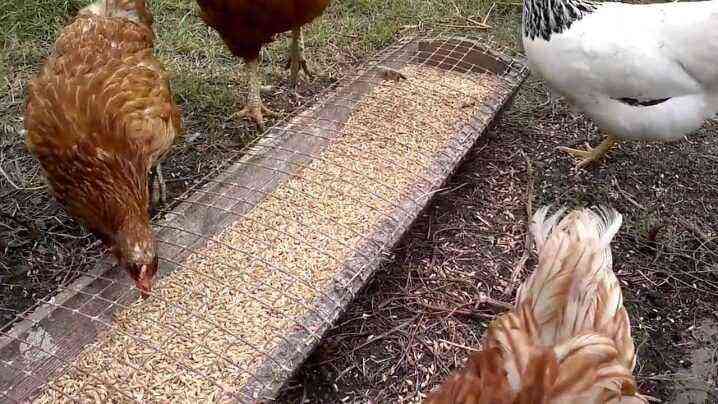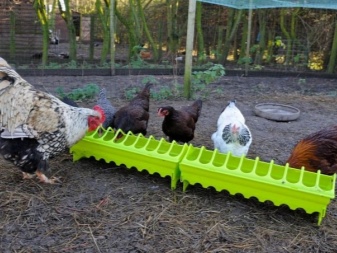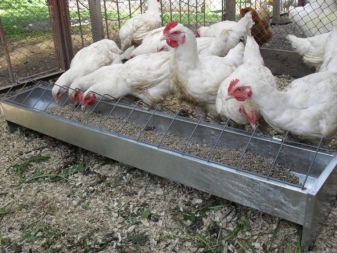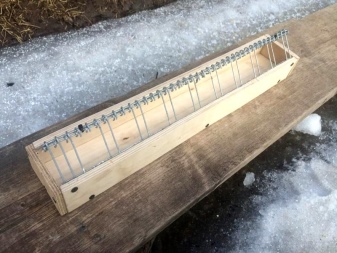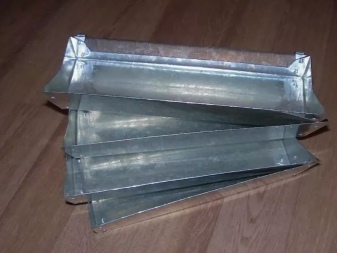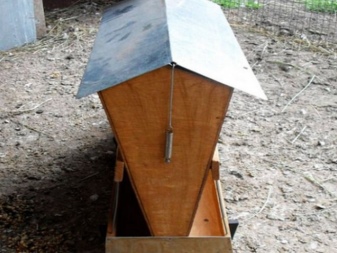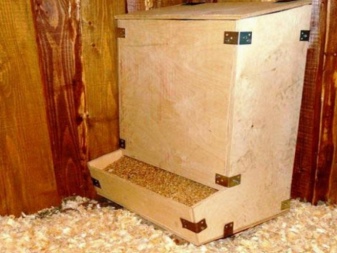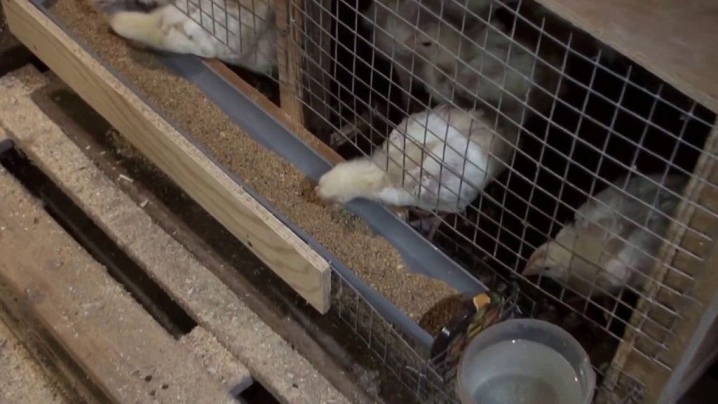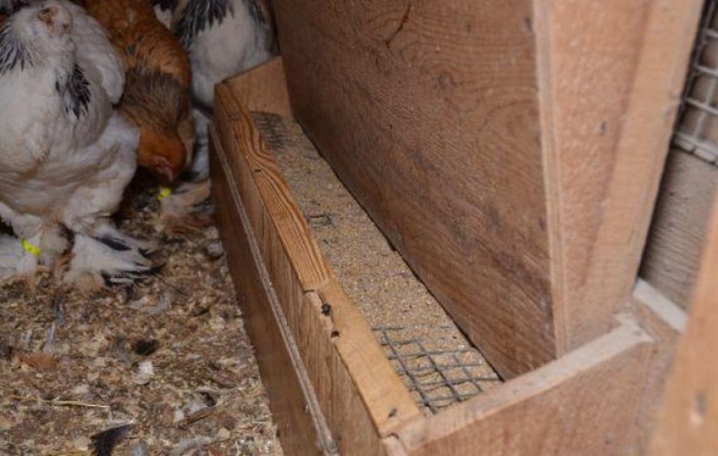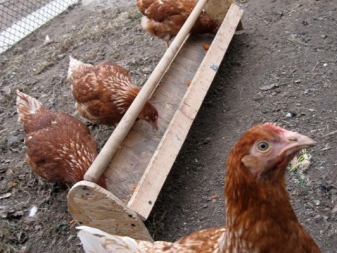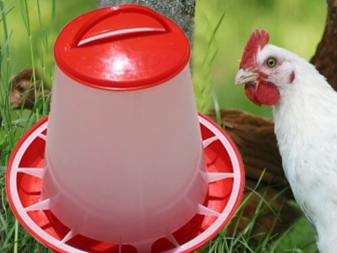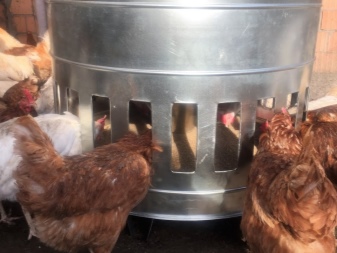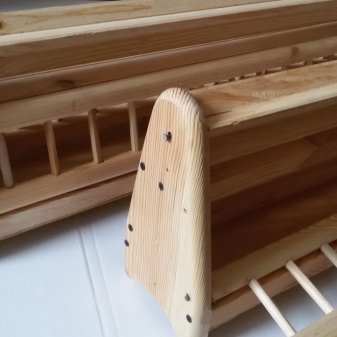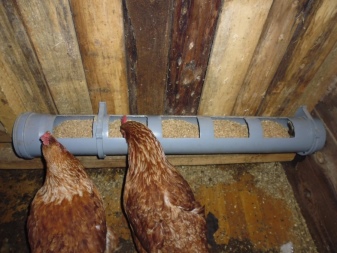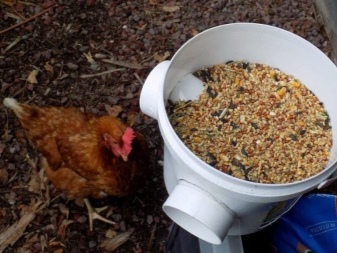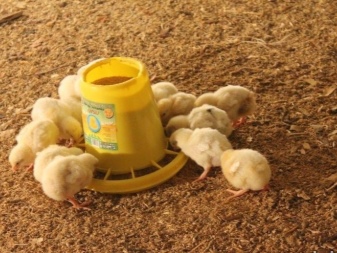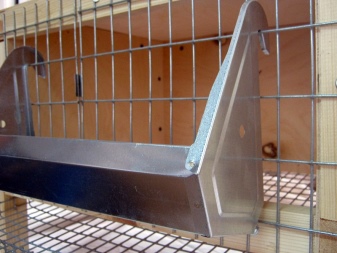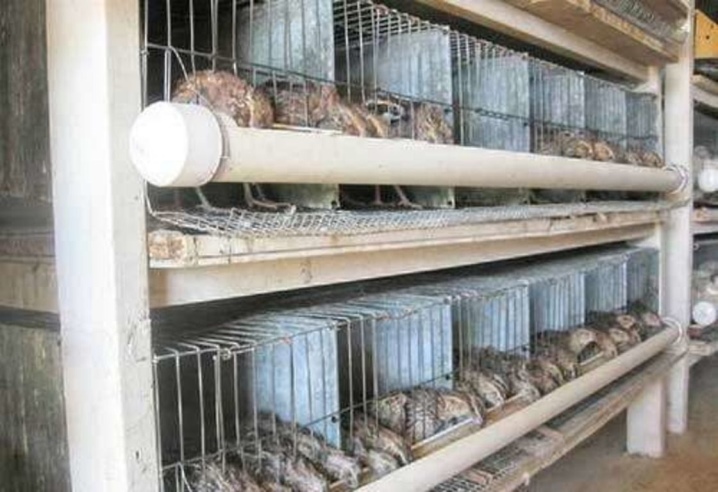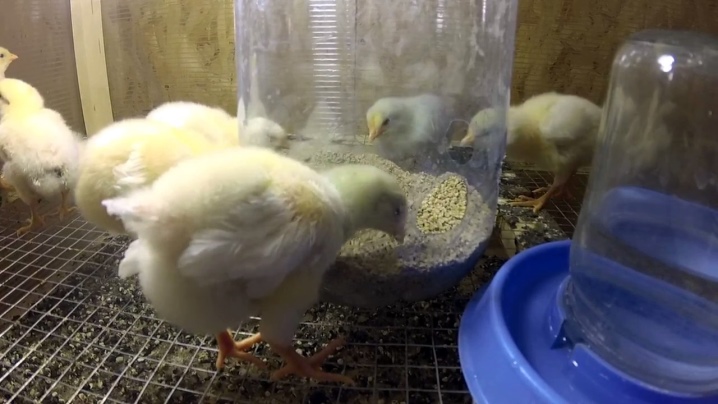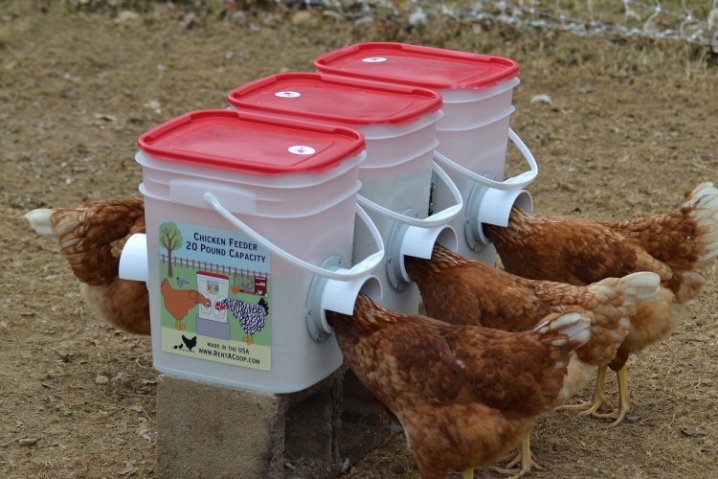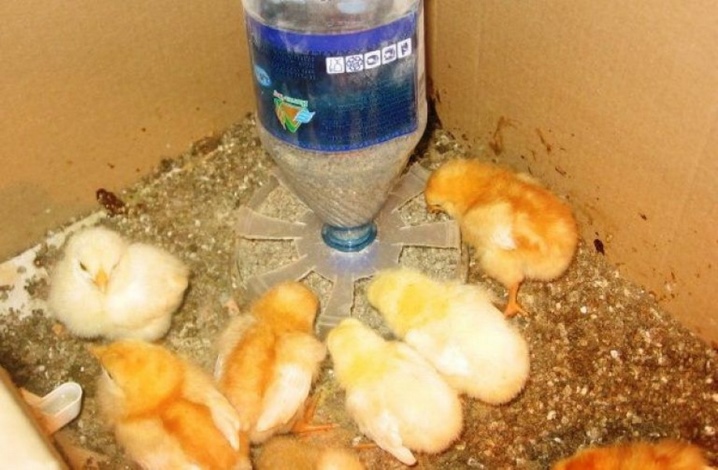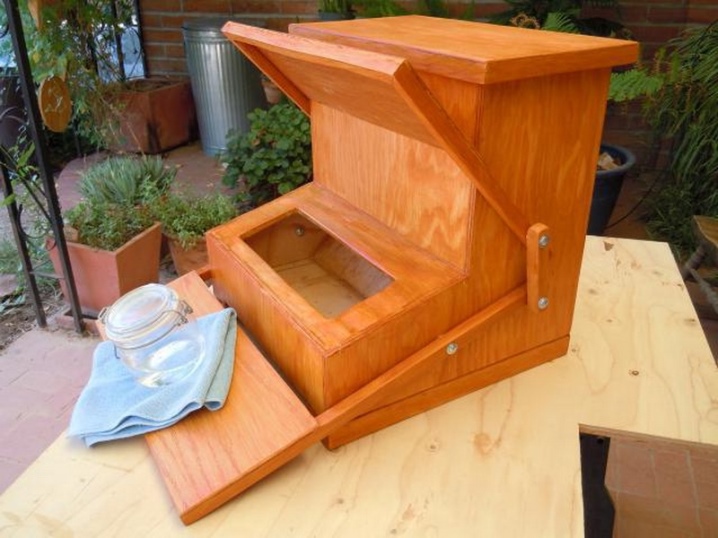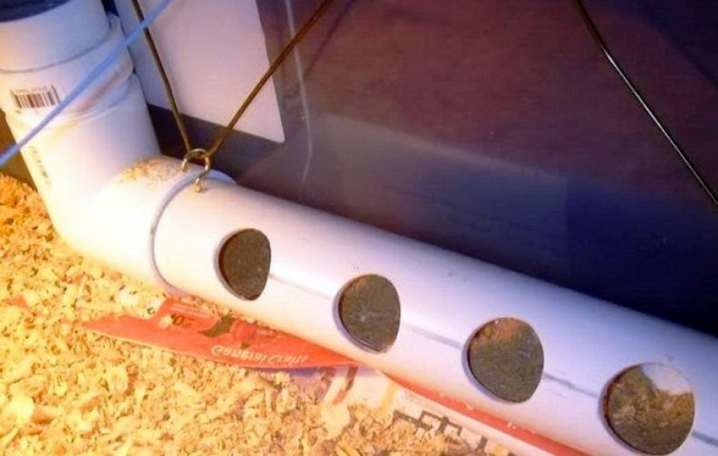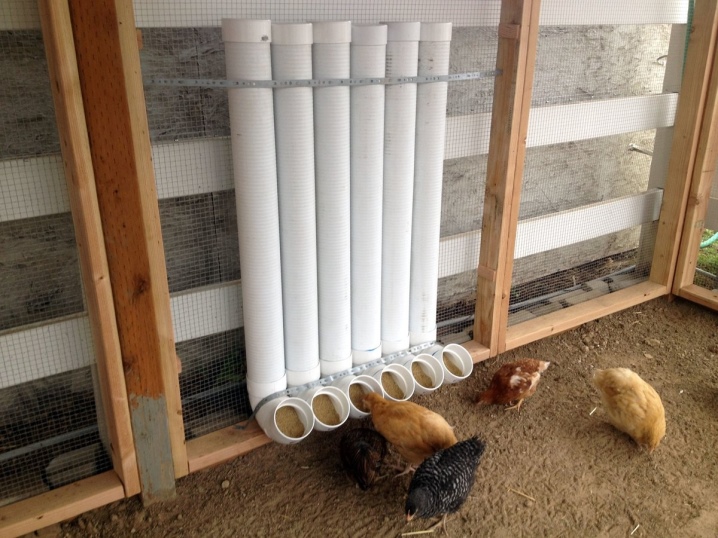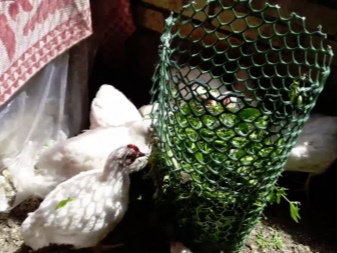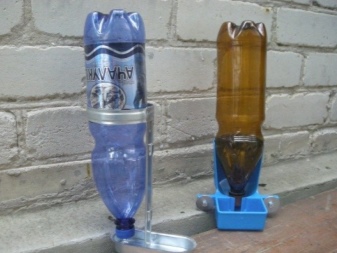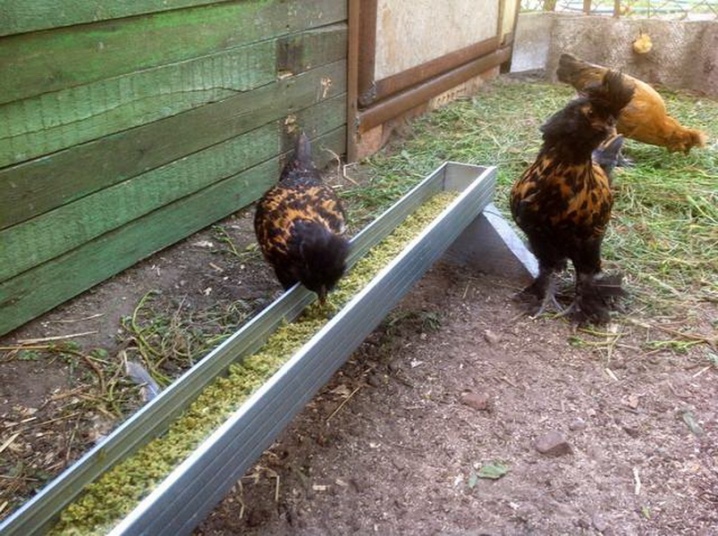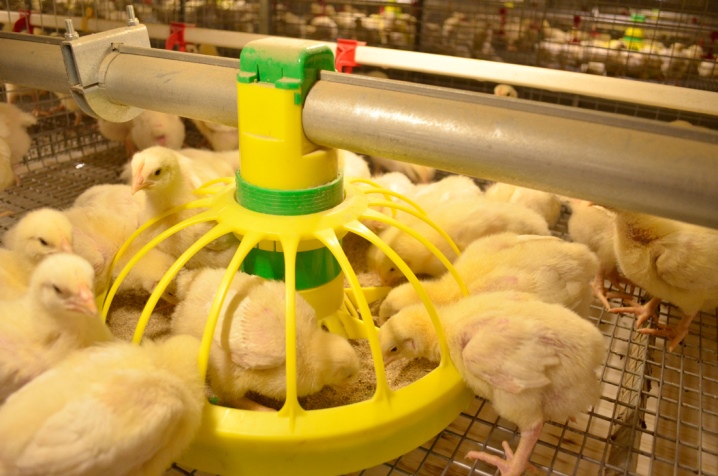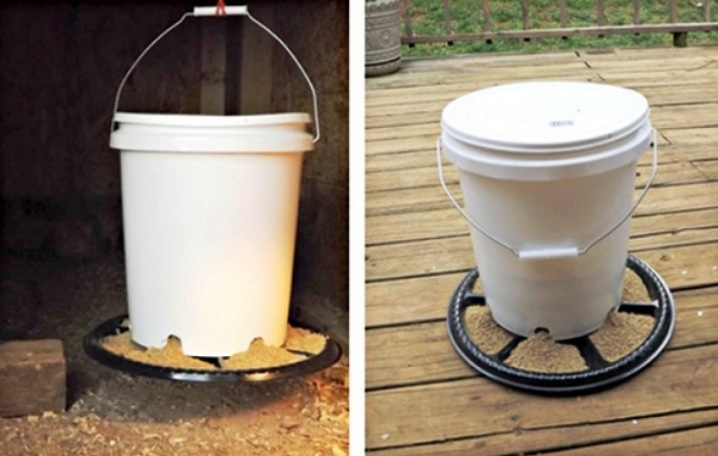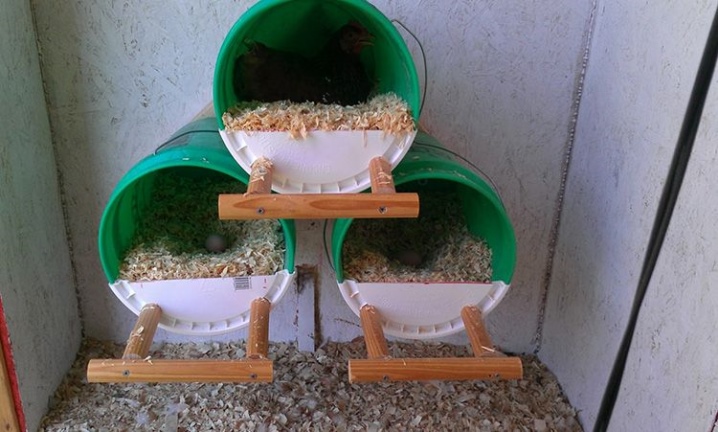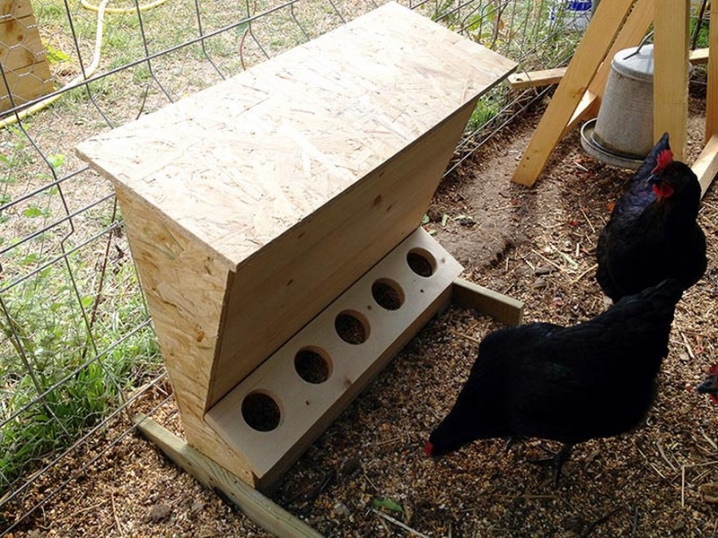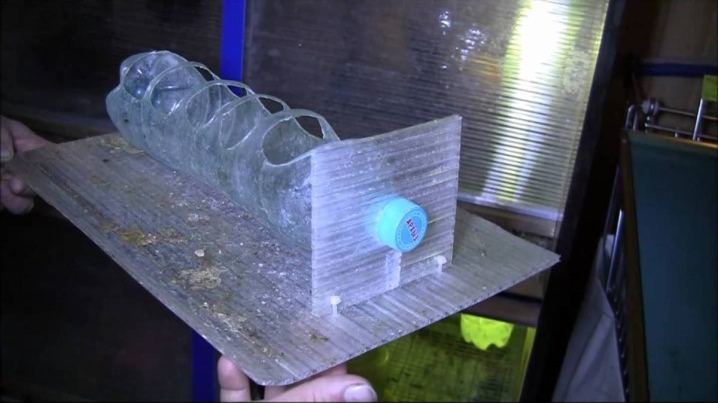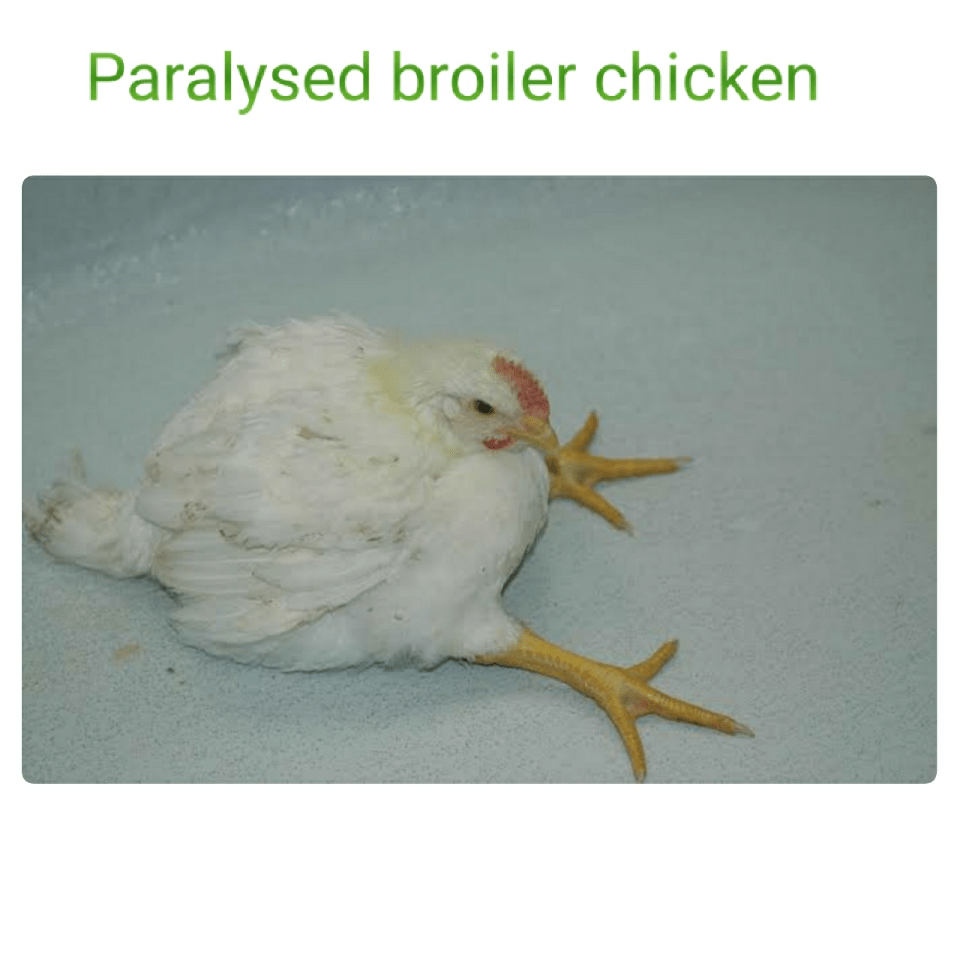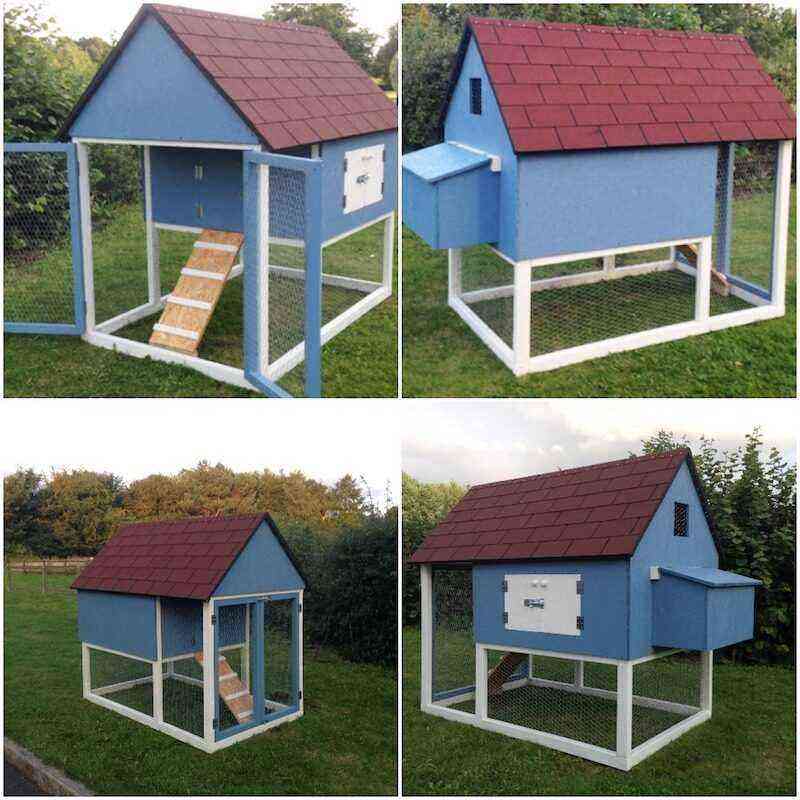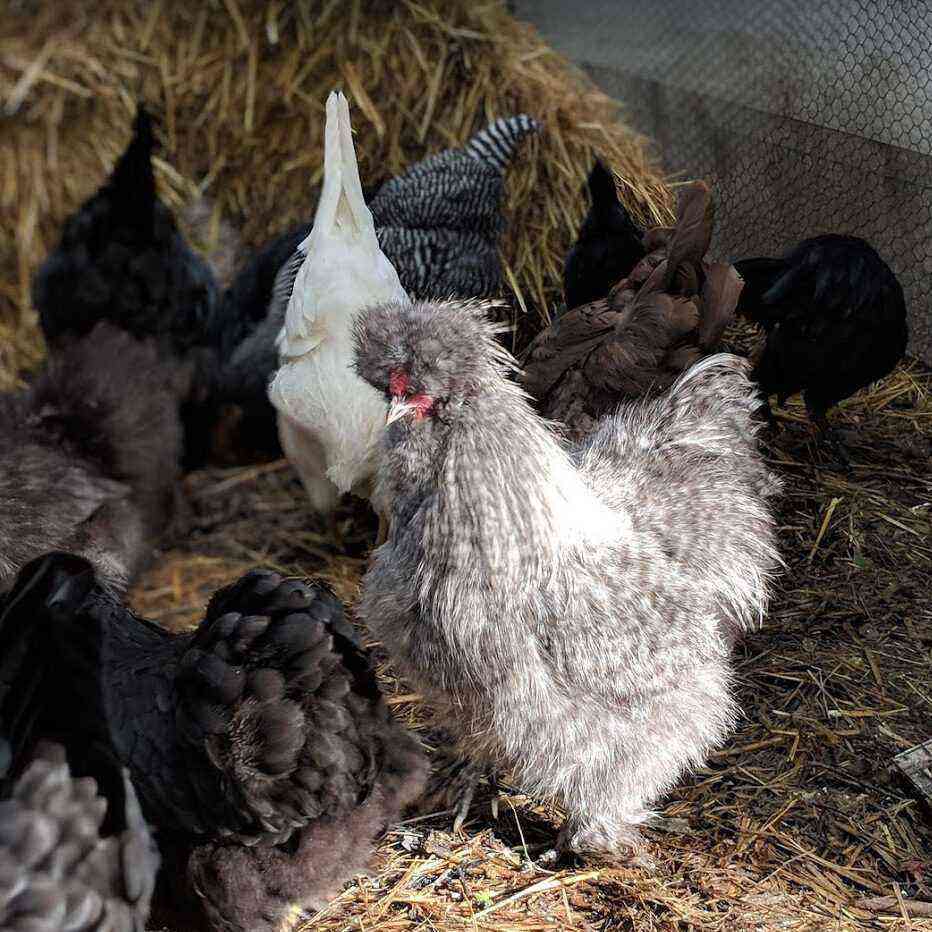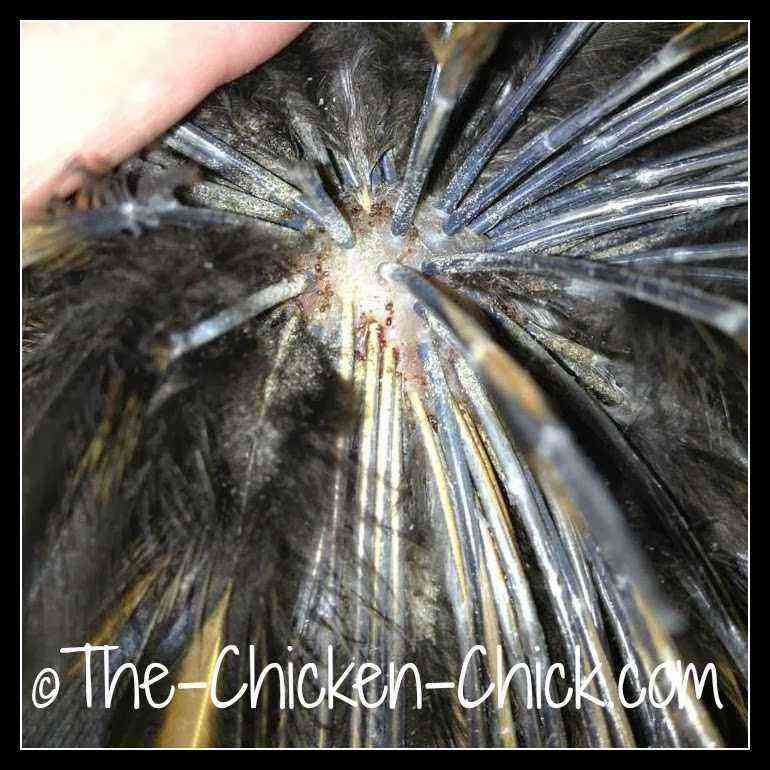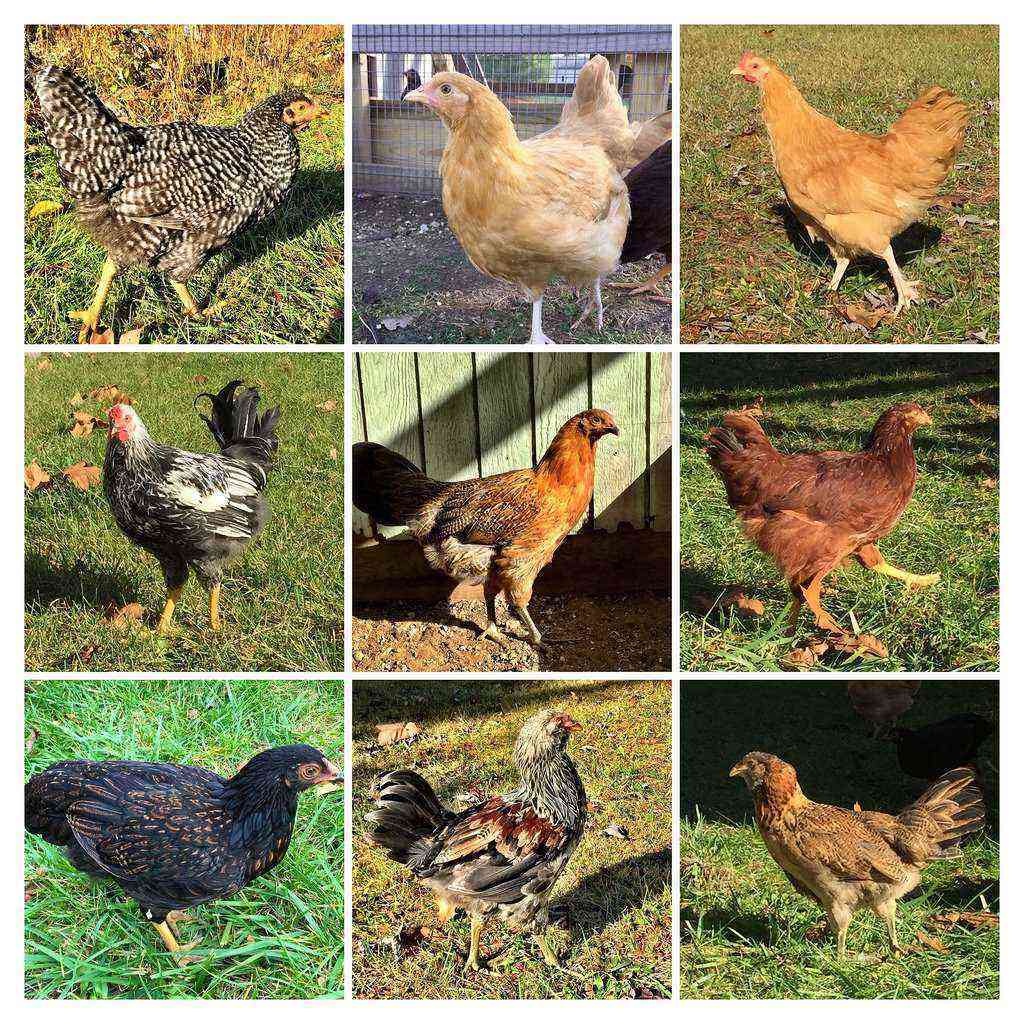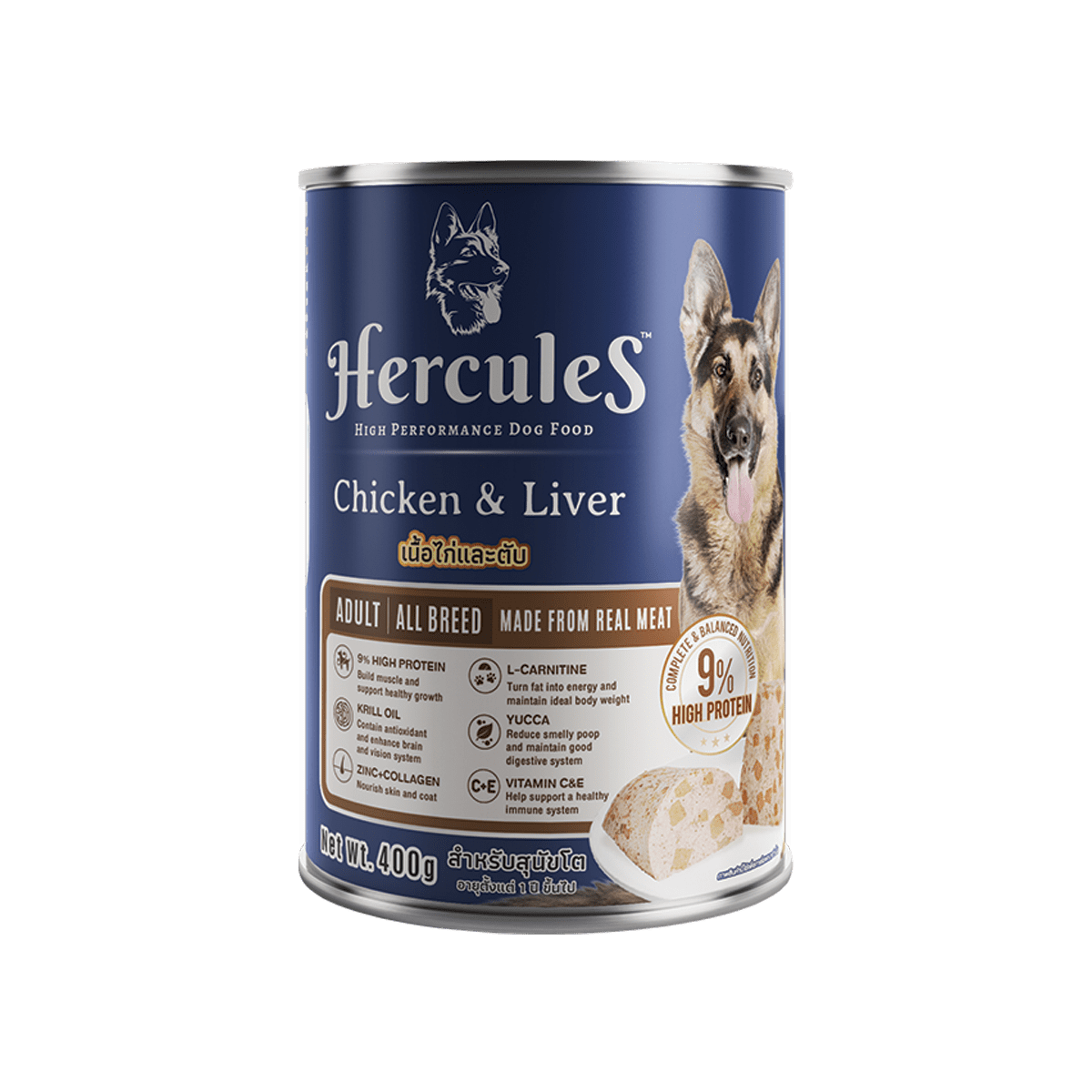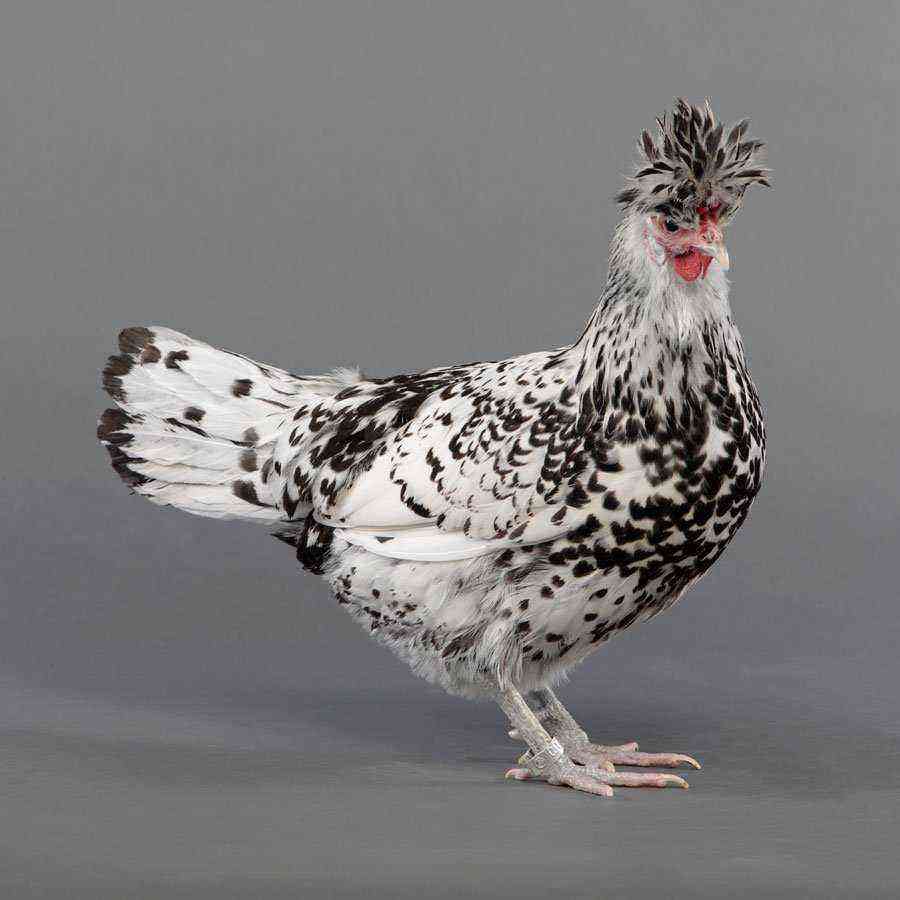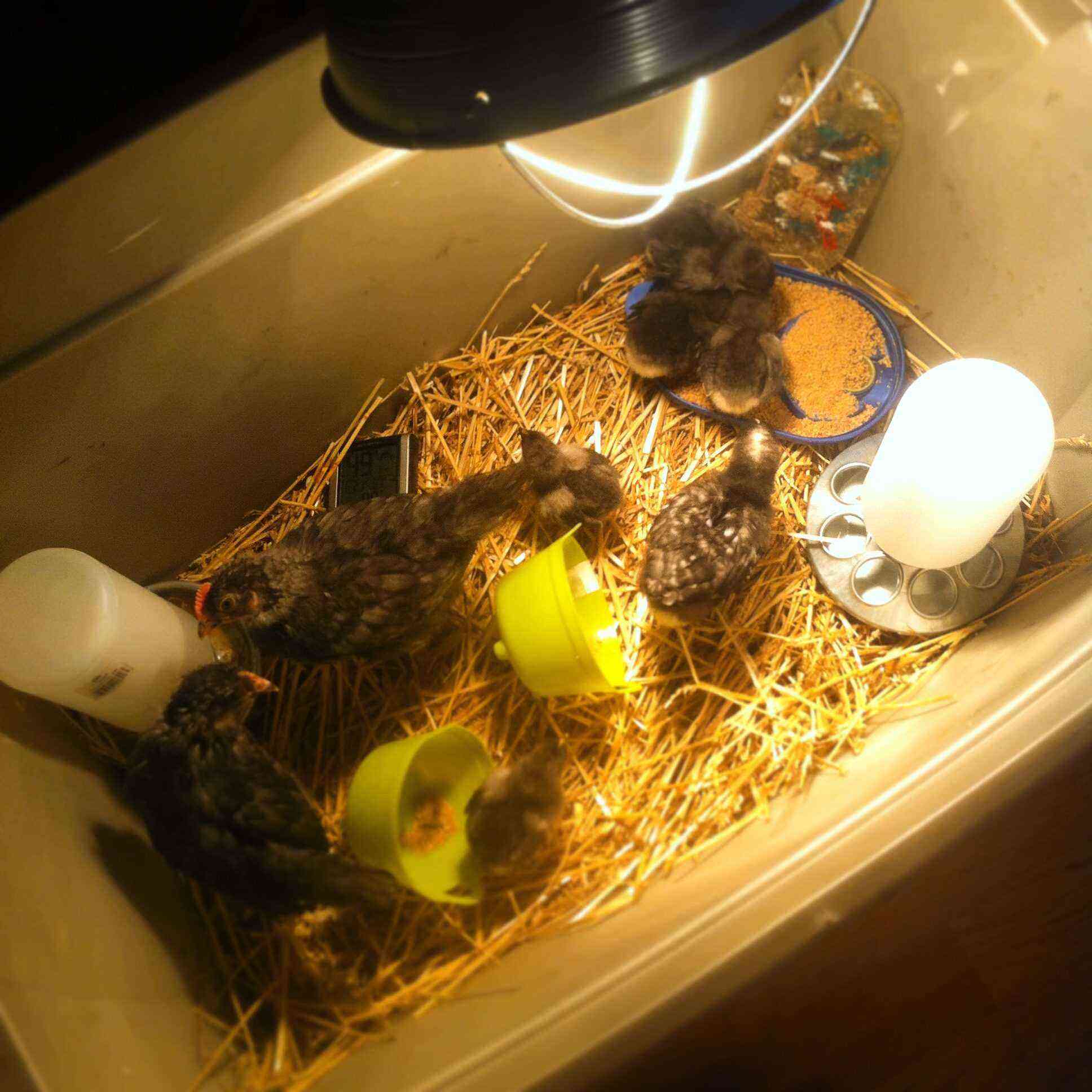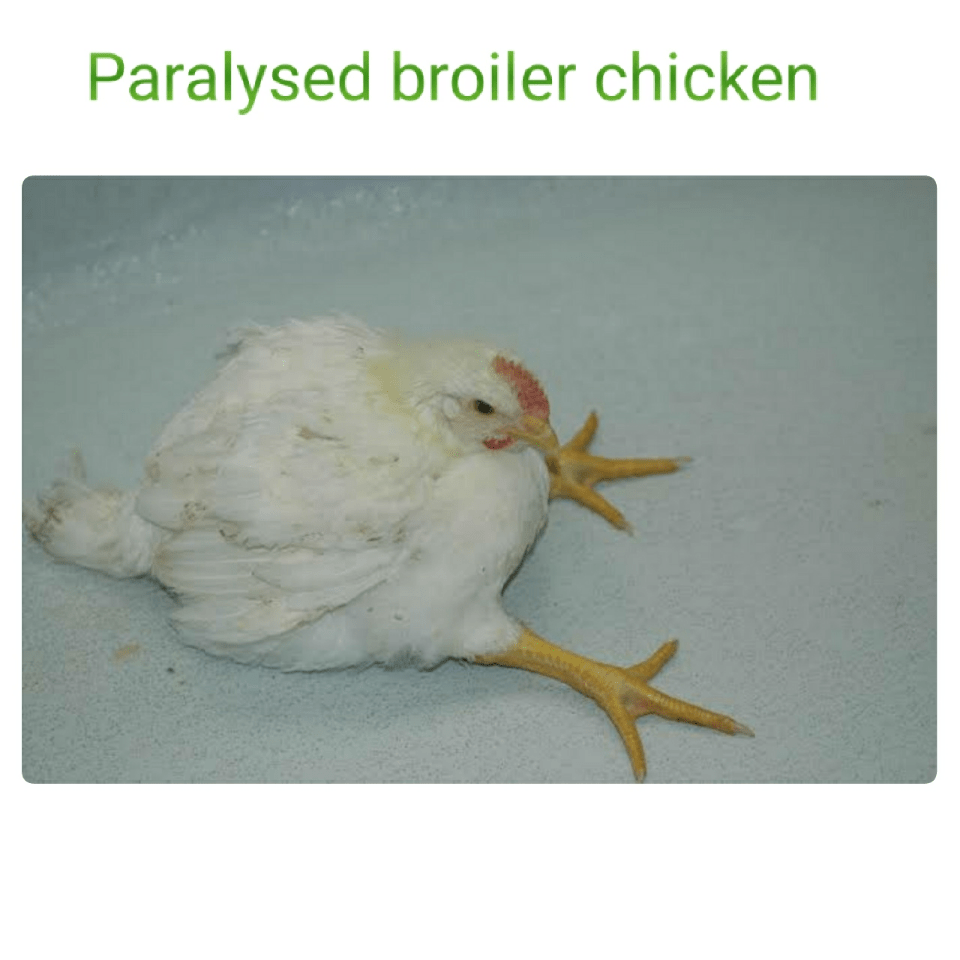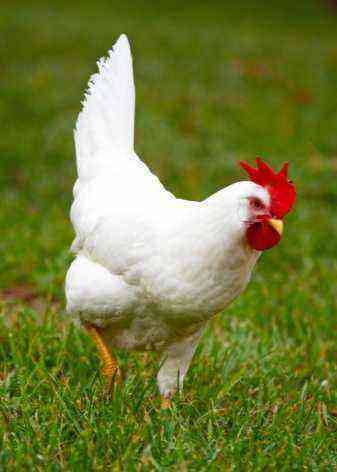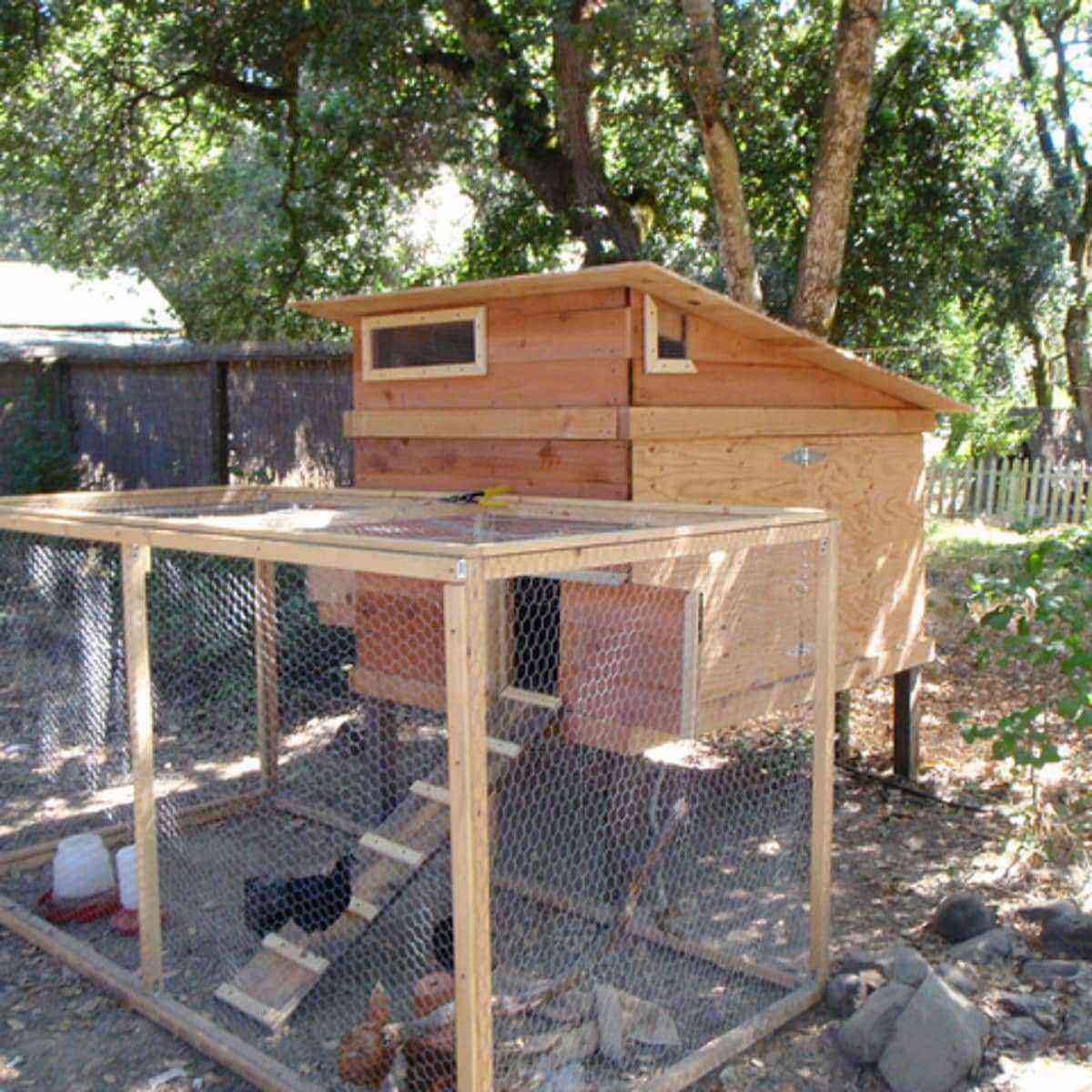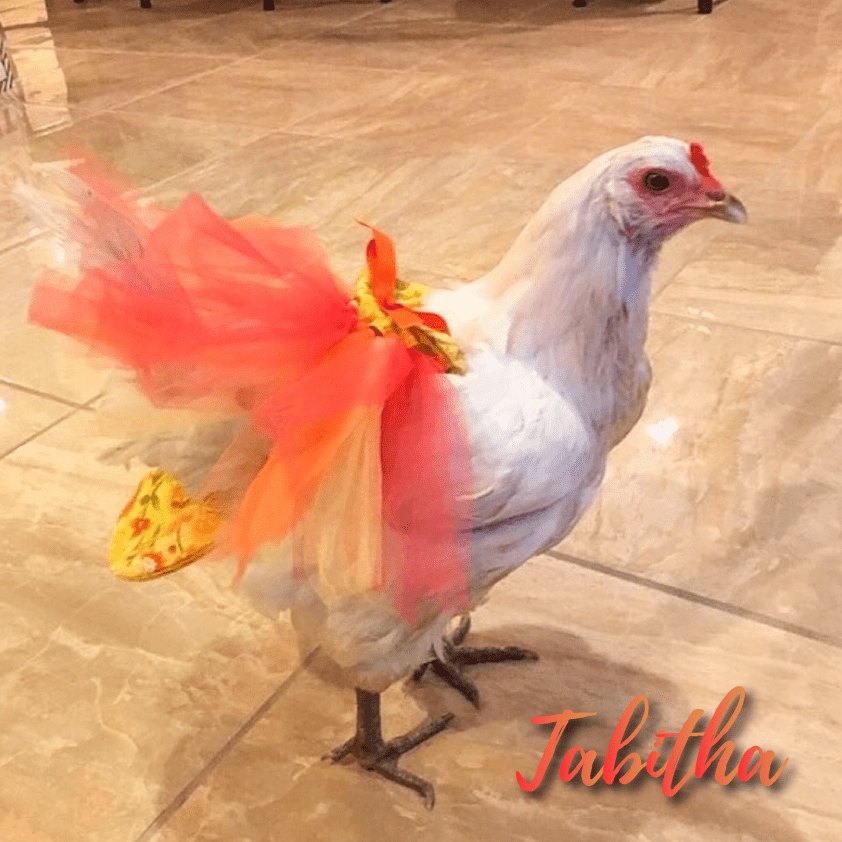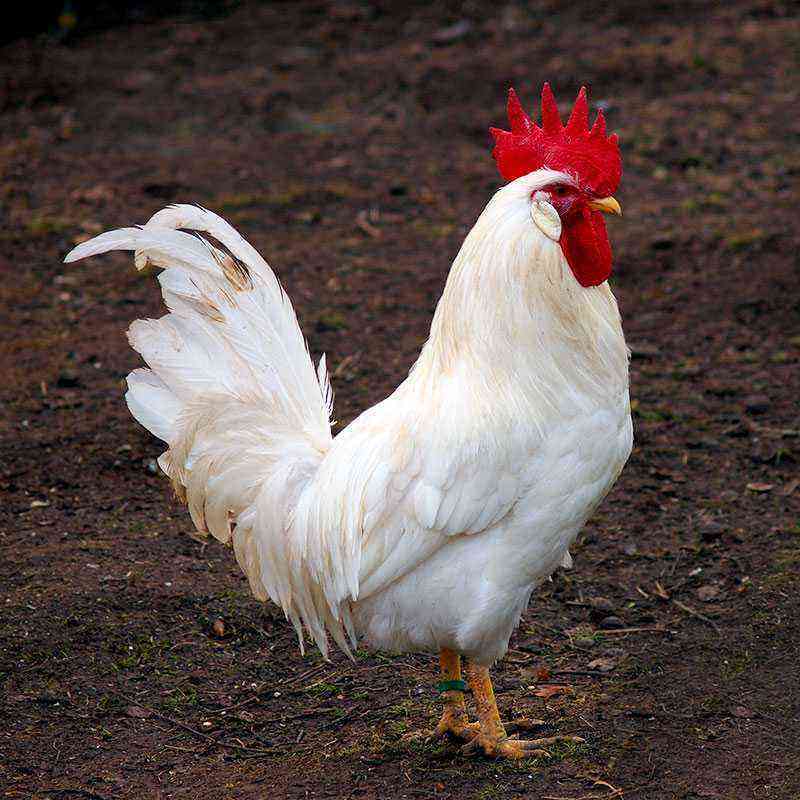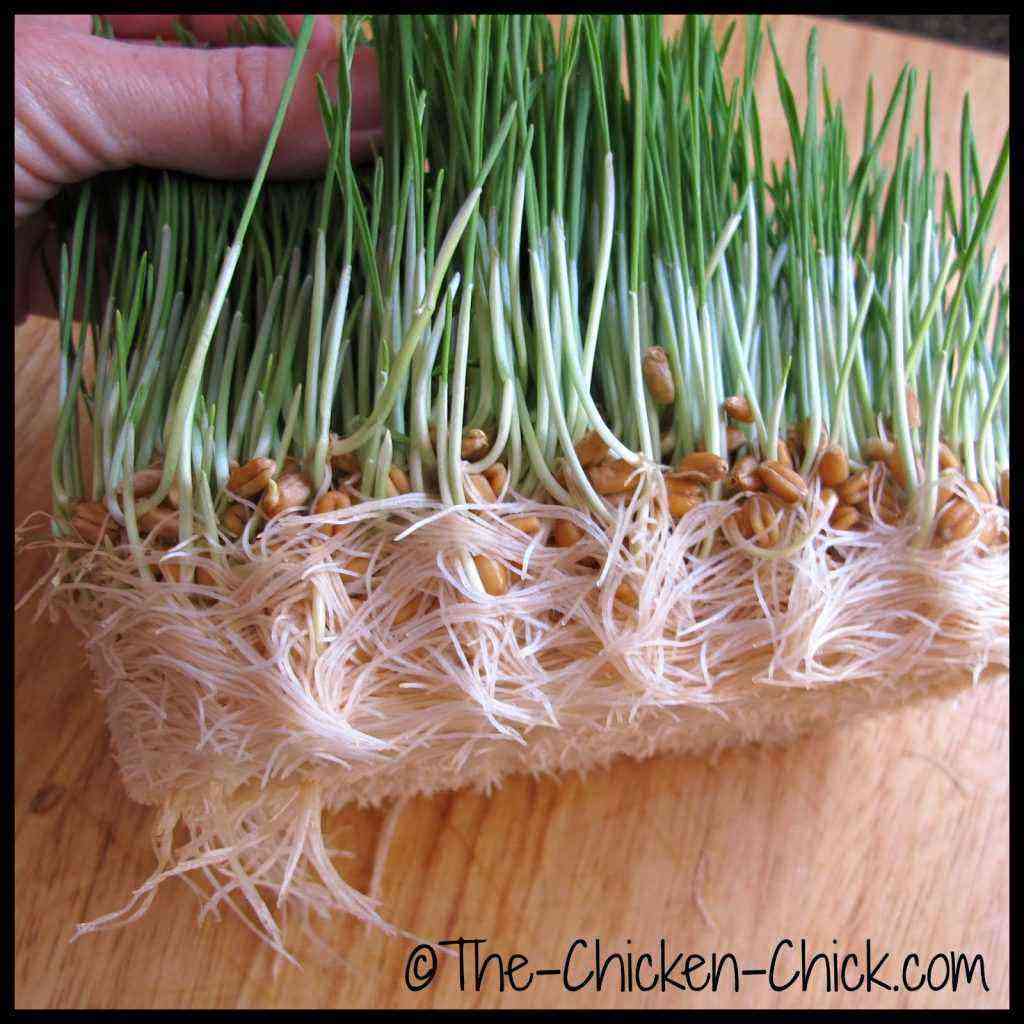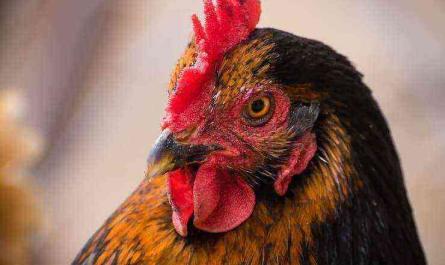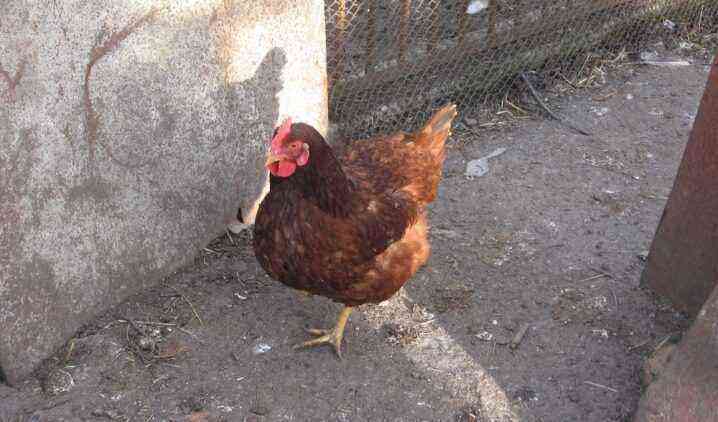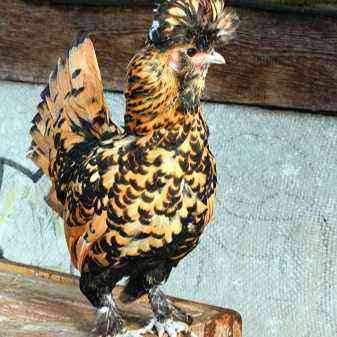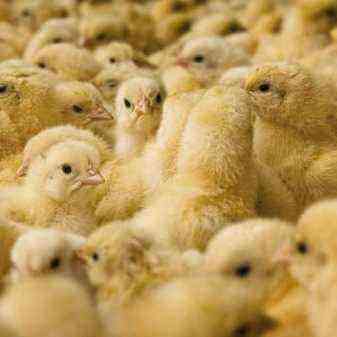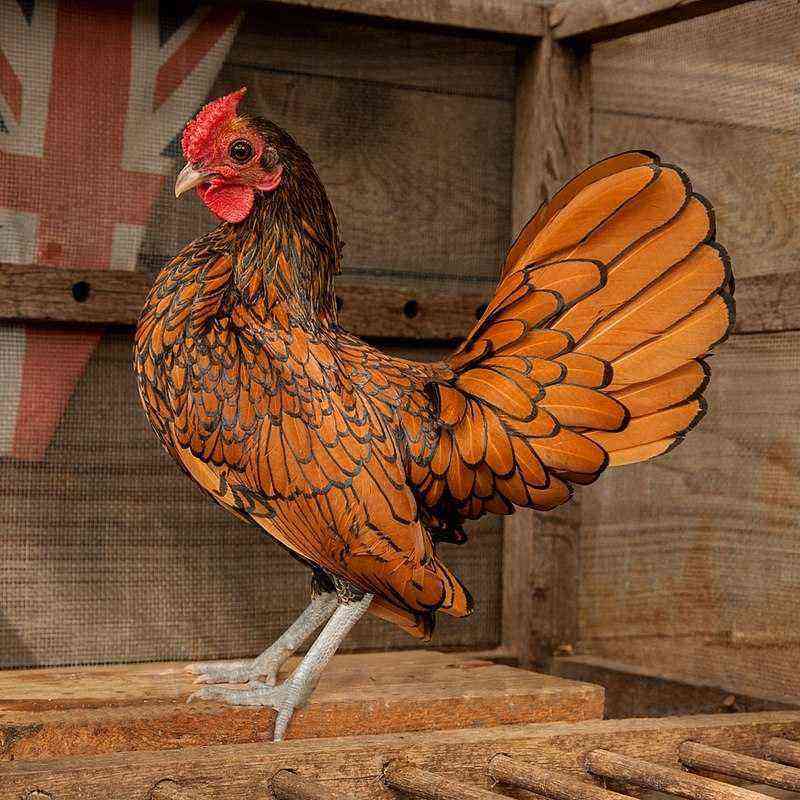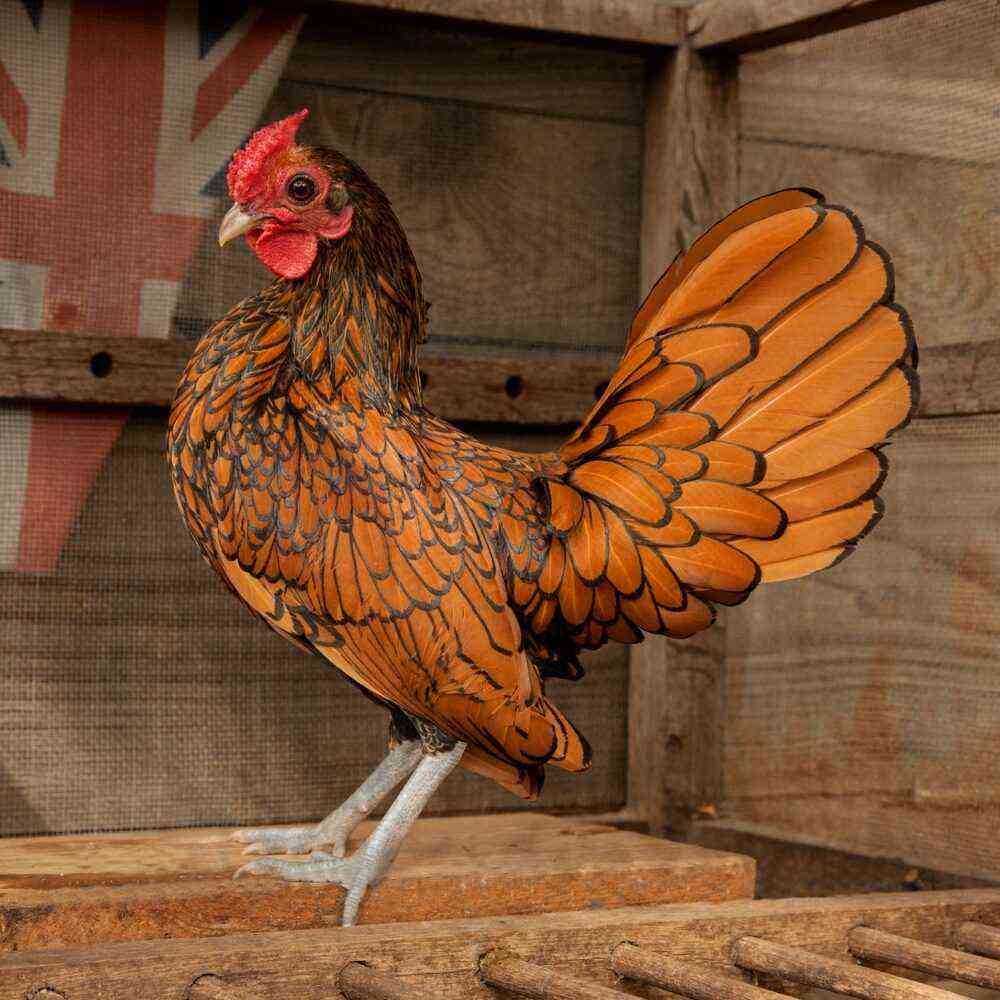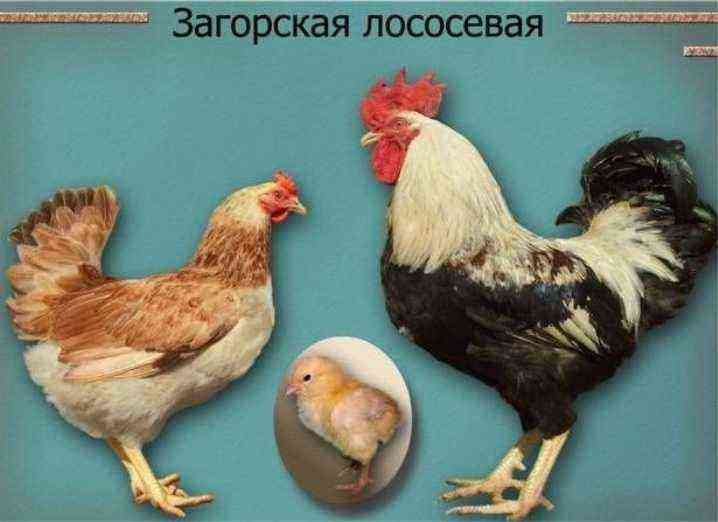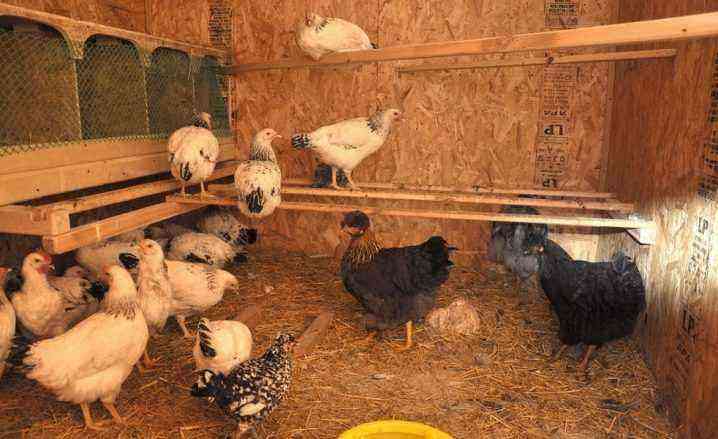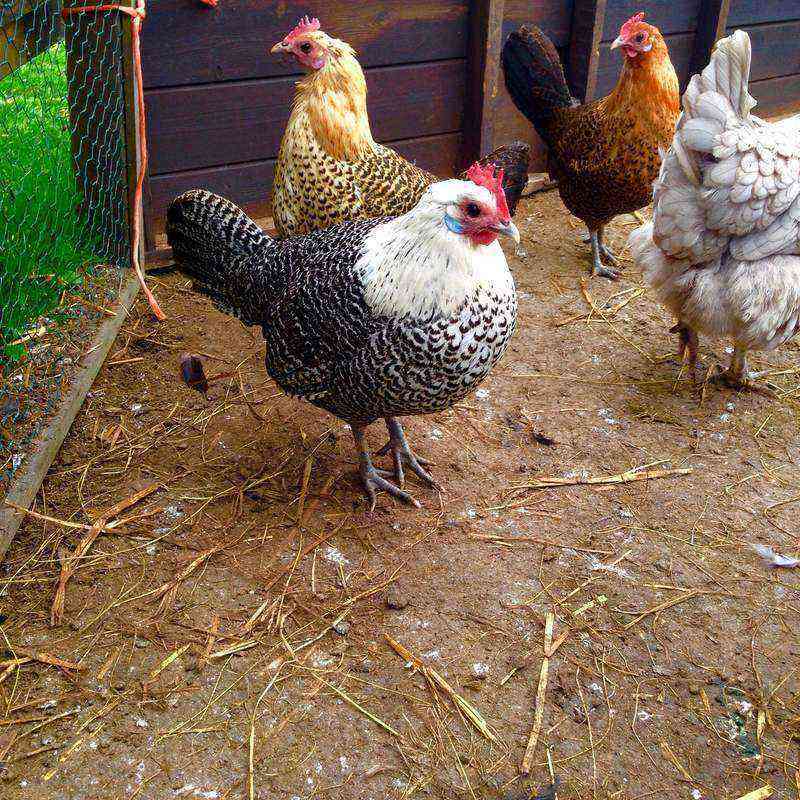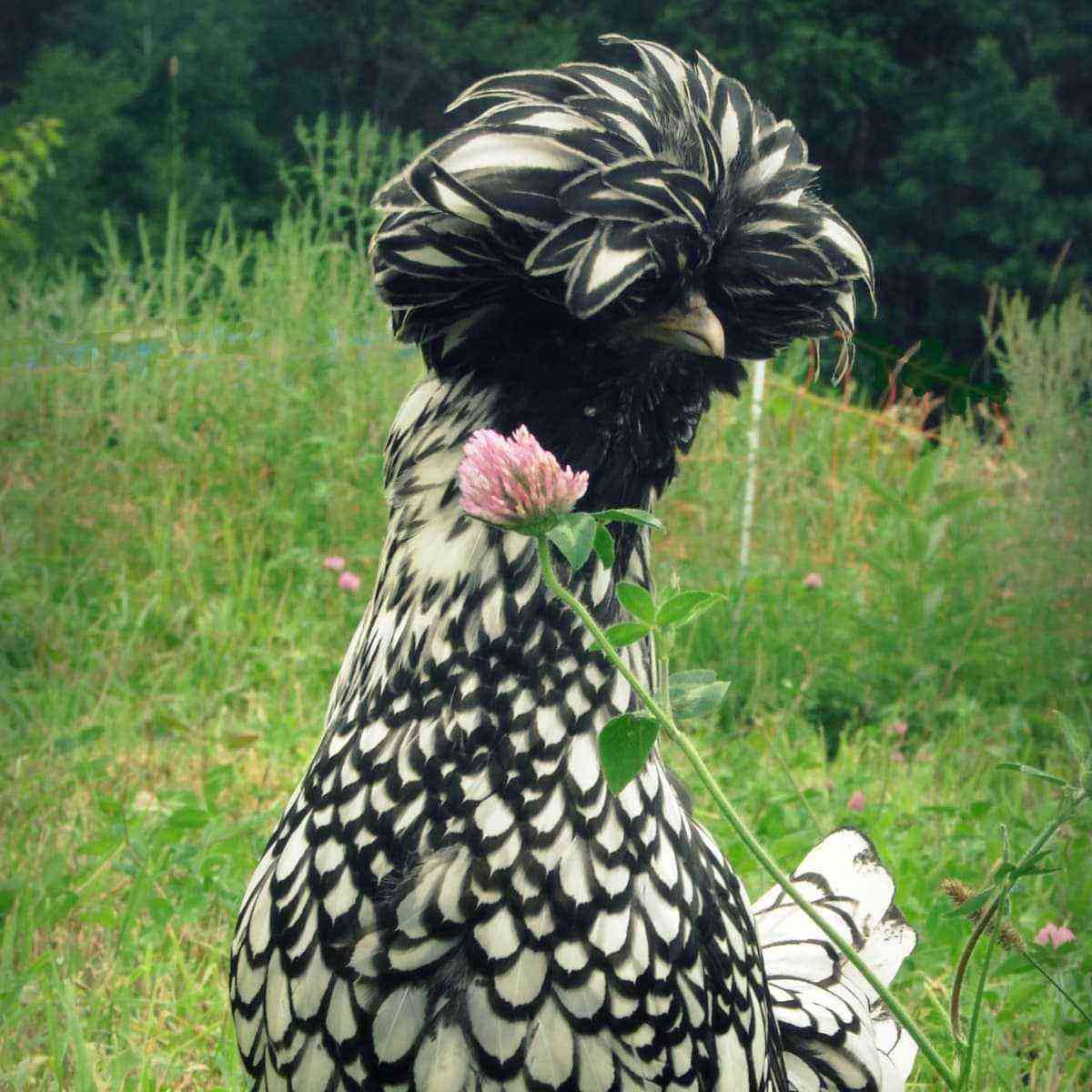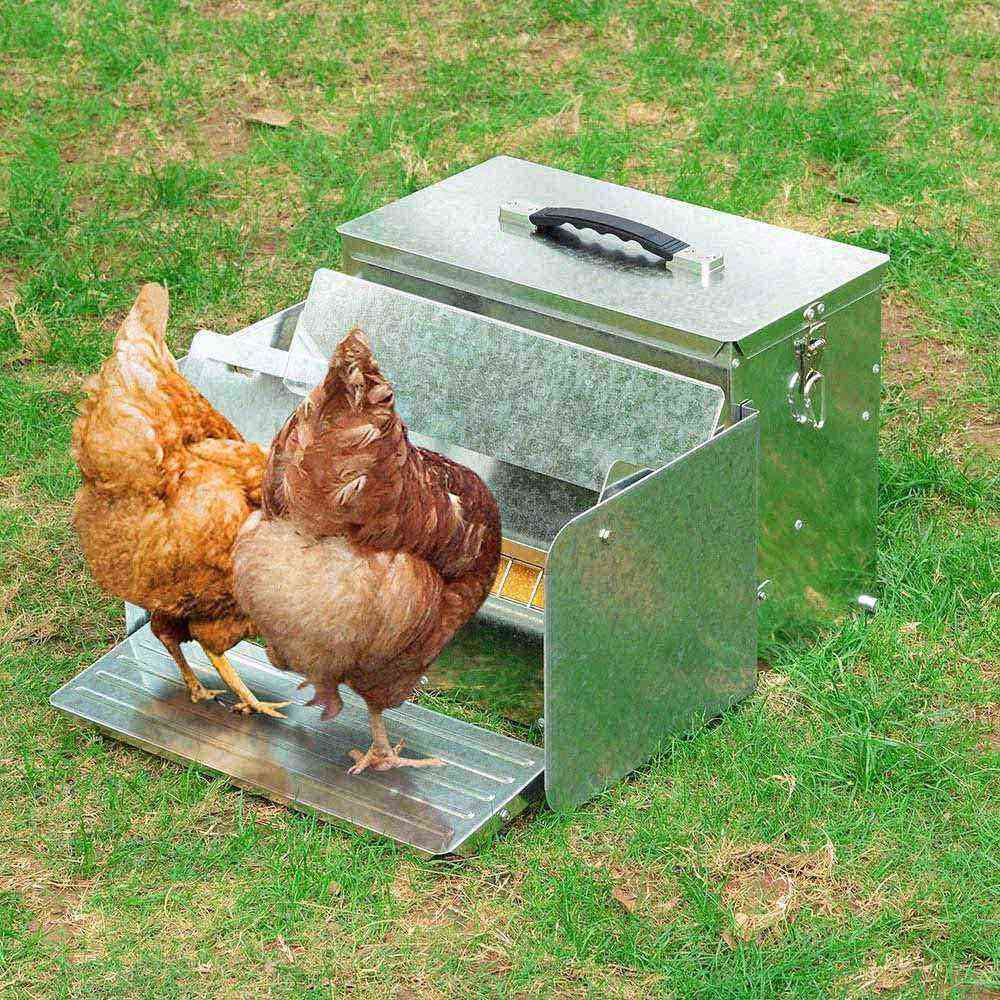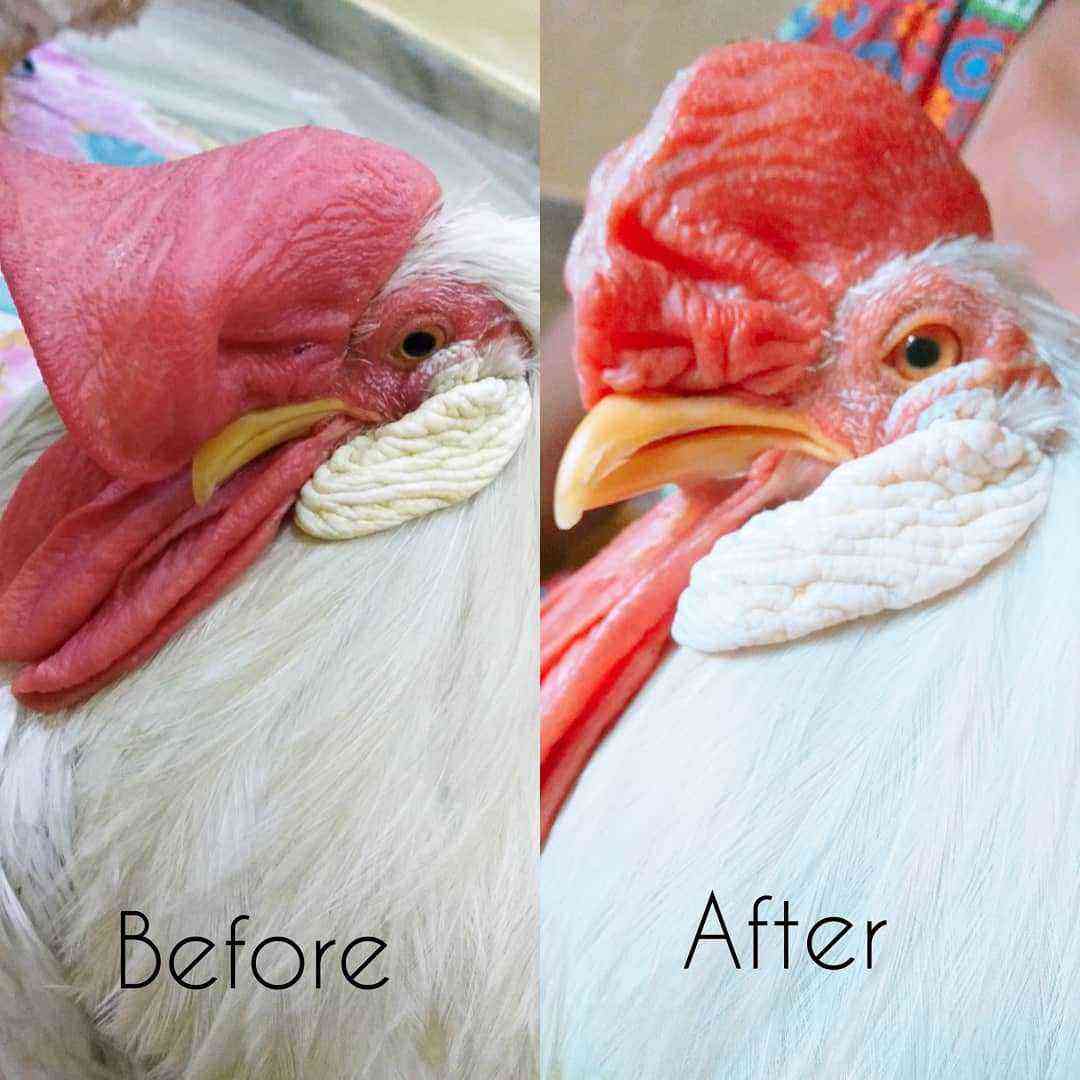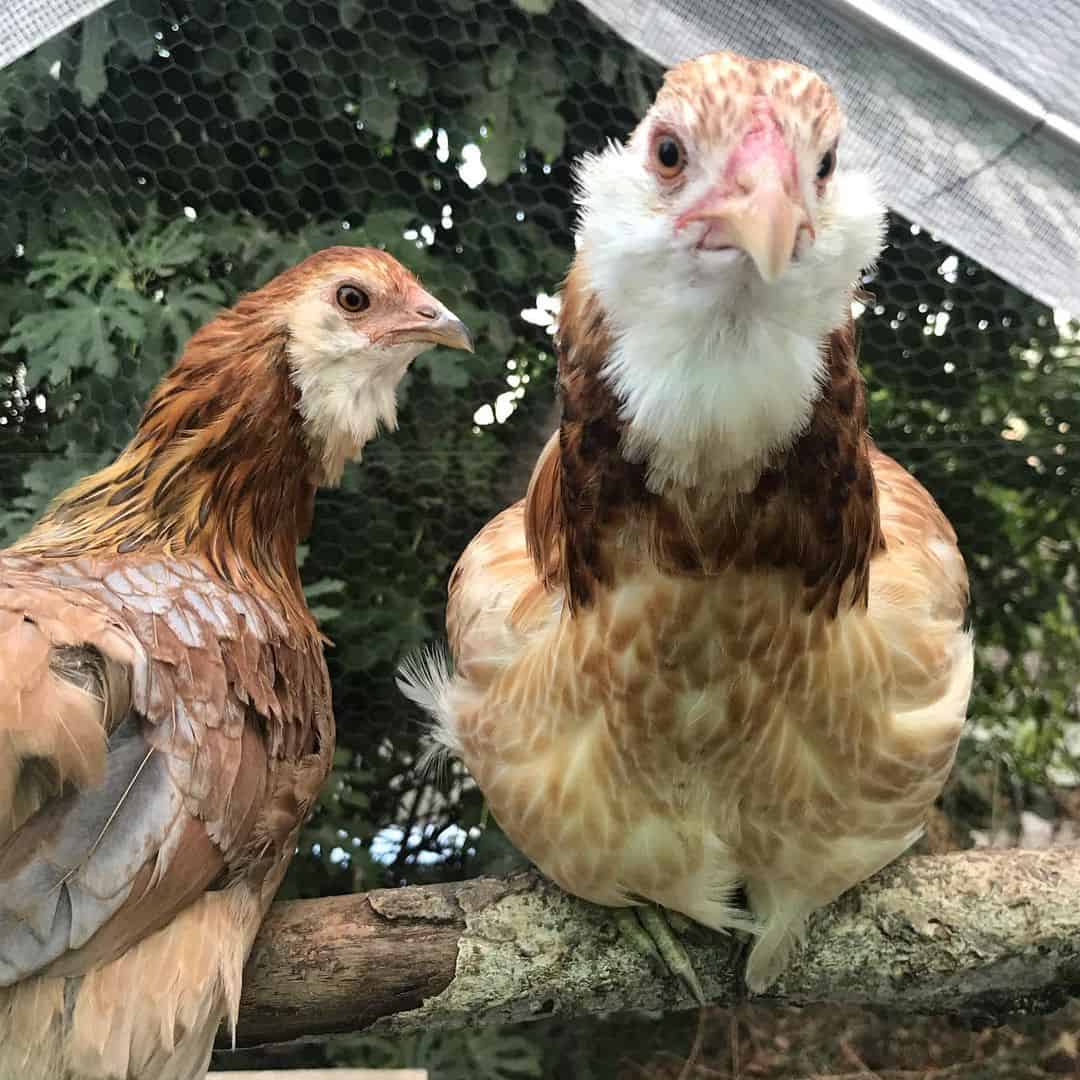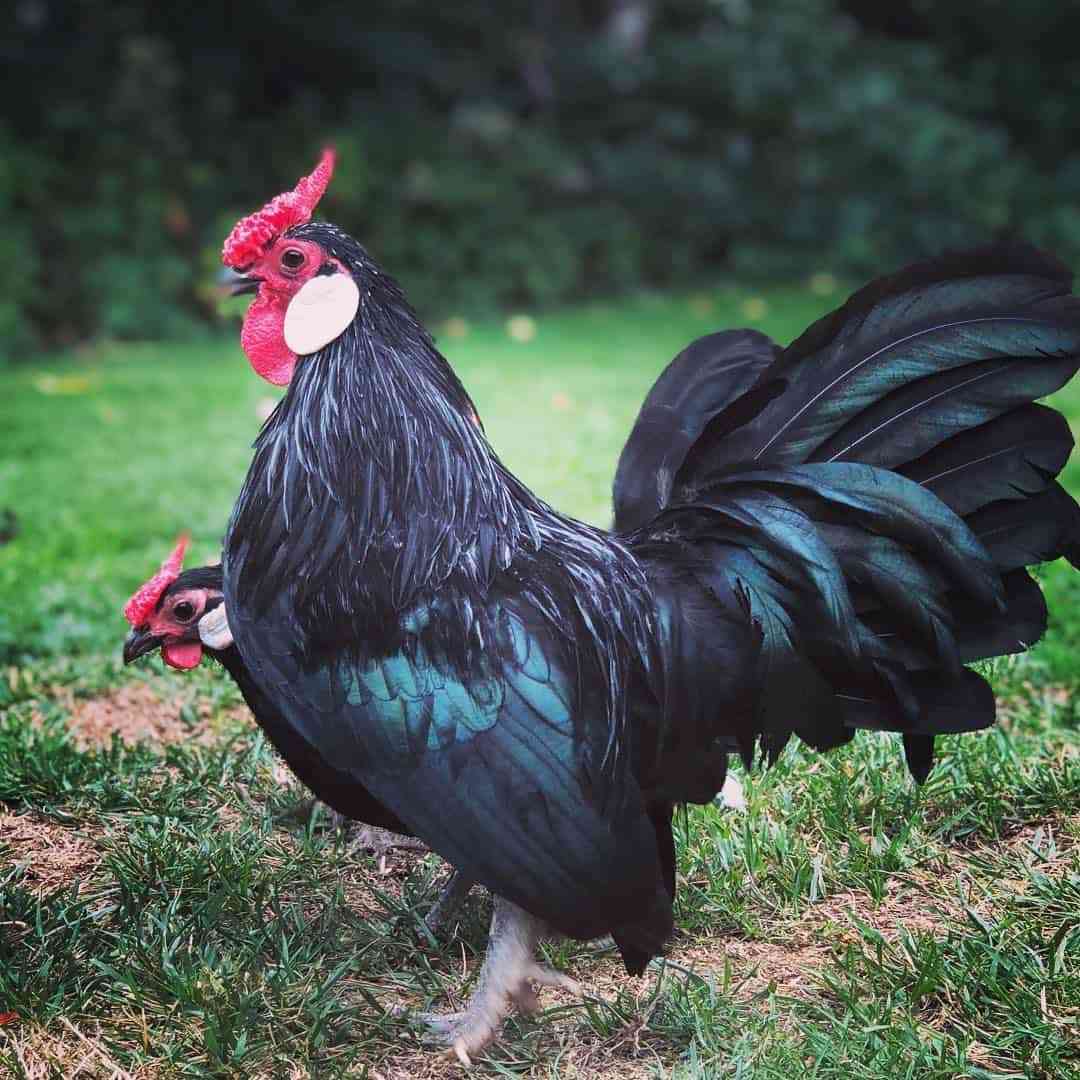In rural areas, many still keep chickens, geese, and cattle to ensure that they always have fresh produce for their families. Most often in villages, in summer cottages or in houses with suitable conditions, you can hear the cock crow and the clucking of chickens. It is these poultry that people most often keep, because it is not difficult to care for them, and the availability of fresh eggs and meat will be guaranteed. In order for the chickens to rush well and be fattened, it is important to make them the right diet and use properly equipped feeders for this, which you can do yourself.
Features
A chicken feeder can be purchased at a store or made by hand. Each owner chooses the most convenient and acceptable option for himself, which will allow him to obtain the desired result at minimal cost. Purchased options are usually much more expensive and do not always fit the dimensions of the chicken coop or do not correspond to the number of chickens that will be eaten from them. In this regard, home-made options are becoming more and more popular, and there are more and more options for their manufacture every year. To be able to design a structure that is convenient for humans and birds, which will provide chickens with full access to food, it is important to consider some points.
- Product convenience – it is necessary to choose materials that will be light in weight and have a convenient shape in order to quickly and efficiently clean the feeders, wash them and disinfect them. When creating a certain option, it is necessary to consider how exactly the process of filling the feeder will go and how the feed will reach directly to the birds.
- Durable materials for the product – choosing the most suitable option for creating a feeder, you should pay attention to the strength of the structure. Products that are too heavy and massive will be inconvenient to use, while products that are too thin can cause injury to chickens and rapid wear of the food container.
- Food quality control – to ensure the normal growth and development of the birds, it is important to give them dry and wet food, ensuring constant access to food for all individuals of the chicken coop. The right choice of design will make it possible to protect food from the fact that chickens will stomp on it with their paws, scatter it on the ground, and defecate in it. Contaminated food will harm the health of the bird, which will later affect the quality of the products received by humans.
- Food dosage – depending on the number of chickens, it is necessary to choose the right container for the future feeder in order to calculate the amount of feed that will be eaten per day. For each hen, you need to allocate 10-15 cm of space for food consumption, 5-7 cm of space is enough for chickens, which should be constantly filled with food. If the feeder is round and high, then 2,5 cm of the height of the container will be enough for one bird. The correct calculation of the volume of the feeder will allow you to fill it with the right amount of food, which is enough for one day.
- No harm to health – when creating a feeder with your own hands, you should make sure that the materials from which it will be made do not harm the chickens. The absence of toxic properties, unpleasant odors, dyes and other harmful components should be taken into account first of all. In addition, design features also affect safety. The presence of sharp corners and edges makes eating dangerous for birds, so it is worth making the feeder as convenient as possible so that the chickens cannot harm each other and themselves.
After analyzing all the factors, you can choose the right materials from which the feeder will be created, and find the most suitable design option based on the species diversity that exists today.
Types
There are several varieties of chicken feeders, which differ in certain parameters. According to the method of feeding, there are such options as:
The first type has the simplest design and is great for young hens. The feeder is a container with sufficiently high sides that prevent food from spilling out. For access of all birds to food, it is usually made in an elongated shape.
The second type is a similar variant, but supplemented by a turntable or a grate that serves as a delimiter. Such a feeder has several compartments for liquid and dry food and is often taken outside the cage, which minimizes the amount of scattered food.
The bunker or mechanical variety is used for dry food only. Its difference from other options is that the food falls asleep in the morning and it should be enough for the whole day to feed all the birds in the chicken coop. Thanks to the correct design, food is automatically added to the tray as soon as the amount of feed there is small enough to make room for a fresh portion. Thanks to the closed design, the feed container remains dry and clean, and the chickens have constant access to food.
All three options are suitable for broilers. For day old chicks, a hopper feeder is considered the best option, which is installed directly in the box where the newborn chicks are. Industrial products have the same design principle, but their main difference is their large dimensions, which are justified by the number of poultry.
Another classification of poultry feed containers refers to the materials from which they are made. They may be:
- metal.
The most popular are wooden products that you can easily make yourself by adapting the design and dimensions to the number of birds in the hen house. This type of feeder is suitable only for dry feed, as liquid feed will not be completely cleaned from the container, which will contribute to the development of harmful microorganisms. Wood is an environmentally friendly material, so it can be used as a food container for chickens without any doubt.
The plastic variety is ideal for use under the mash, which is necessary for the full nutrition of chickens. Thanks to their even and smooth surface, it is possible to quickly and easily remove all food debris and wash the dirty feeder efficiently. The main principle to keep in mind when choosing a container should be its quality. The thickness of the plastic and its composition must be suitable for use by chickens.
Products that are too thin can crack, causing food to spread on the ground. The presence of harmful components can cause gradual poisoning of chickens, which will result in diseases of varying severity. The height of such feeders should be designed for the age of the bird – for small chickens, you can choose products with low sides, for adult laying hens, you will need a larger and higher container so that they do not turn it over while eating.
The metal feeder is similar in purpose to the plastic one, but has its drawbacks. Ferrous metal, in constant contact with moisture, begins to rust, which negatively affects the health of the bird, and stainless steel has a rather high cost. After analyzing all the factors, it is clear why the advantage is usually given to the first two types of products. If we talk about the location of the feeders, then there are:
- Hanging structures.
The first option can be considered optimal, because there is no specific reference to the place and the container can be installed anywhere in the chicken coop. The second option is fixed to the wall of the chicken coop, which allows you to securely fix the container, preventing the chickens from knocking it over. Depending on the number of birds and their age, you can use one particular option or both at once.
Selection rules
To choose the best option for the design of the feeder, it is worth considering some factors:
- number and age of chickens;
- dimensions of the chicken coop;
- poultry diet;
- diet.
Depending on the age of the bird, you can choose any design option, or use them based on who exactly you have to feed. If a bunker, tray and flute feeder is suitable for adults, then only the first option is needed for chickens. If the chicken coop is large enough, then a feeder or several such products can be installed on the ground. With minimal dimensions, these objects are screwed to the wall of the house. The location of such tanks will be the determining factor influencing the design of the future facility.
The diet of the bird is also important, which should consist of dry and wet food. If you follow these guidelines, then the best option would be a trough feeder, which has compartments for both food options.
It is also important to take into account the diet, which may include multiple feeding or a one-time bookmark. Not only the design, but also the size of the feeder depends on this factor. After analyzing all the characteristics well, you can understand which version of the feeder will be the most successful for a particular chicken coop. If you treat the choice negligently, then in the near future you will have to face a number of problems – chickens will go hungry, stop rushing, start to get sick or fight often. To avoid any such situations, it is worth approaching the choice of feeder design with all seriousness.
How to do it yourself?
It is not difficult to make a chicken feeder from improvised materials, the main thing is to pick up everything you need and start creating a new product. The most popular and simple option is to build a container for feeding chickens from a 5-liter plastic bottle. The advantage of this container is lightness, ease of work with it and the expected result. In order for the home-made design to work correctly, it is important to choose a container that will slightly exceed the size of the bottle so that food is poured into it, which the birds will consume.
The principle of creating such a feeder is very simple – round holes the size of a coin are cut at the base of the bottle, through which food is poured out. A plastic container is installed in a larger container, after which food is poured through the neck. As soon as the food from the tray is eaten, its supply will automatically be replenished with what is in the bottle. The number of such products is regulated by the number of poultry. There may be several such feeders to provide food for all birds for the whole day.
A more complex design option involves the use of wood. To make the feeder comfortable and neat, you must first create drawings and only then get to work. The dimensions of the future product will depend on the design features and the number of birds. The wooden feeder is designed only for dry food, therefore it can be made in several versions.
A simple design involves the creation of a small trough into which food will be poured. This option is most often used in villages and dachas due to the ease of creating a product, but it has significant drawbacks: birds can scatter food, so it will take much more, it is more actively polluted and the bird can get low-quality food, which will damage her health. The most correct option would be to create a wooden bunker feeder. The algorithm for its construction is as follows:
- you need to prepare all the necessary improvised means and materials: a saw, a hammer, nails or a screwdriver with self-tapping screws, boards or fiberboard / chipboard / plywood;
- create a drawing of the future structure;
- make markings on the material from which the feeder will be created;
- cut out the parts and connect them together.
The front part should have dimensions of 40 by 50 cm, the back – 40 by 40 cm. The sides will have a conical shape and connect both parts of the structure. The lid should exceed the top of the product by at least 5 cm, and preferably by 10 cm, in order to protect the contents from foreign inclusions that adversely affect the quality of the feed. There is a small gap at the bottom of the feeder. Through it, the food will wake up in a special tray under the structure, which will allow chickens to comfortably eat in the chicken coop.
A fairly new and original version of the material for creating a feeder are plastic pipes. A suitable diameter for this purpose will be at least 15 cm, and the length is selected taking into account the characteristics of the chicken coop and the number of birds. In addition to simple pipes, you also need to purchase a tee and plugs. There may be several design options.
- A horizontally located pipe on which holes are cut, through which chickens can absorb food. On the sides of this pipe are placed elbows pointing upwards. A plug is put on one of them, the second is a worker, food is poured into it, after which a plug is also put on.
- A vertically located pipe with a tee at the base and a branching on two sides, which will be a feeding tray, where food will spill from the main pipe.
Depending on the option, the type of fastening will also differ. The first is installed at the bottom of the chicken coop and can be attached to the wall or floor, the second option is attached to the wall or ceiling of the chicken coop.
In the spring-summer period, you can also build greenery feeders, which are best obtained from a metal mesh. It is twisted into a circle and filled with green fodder. If the feeder is created for chickens, then it is best to use the bunker version using a plastic bottle with a capacity of 1 to 2 liters, no more. The principle of creating such a product is the same and consists in making holes at the base and pouring food into the main part of the bottle.
Subtlety of operation
In addition to building the structure itself, it is important to properly care for it, keep it clean and change food in a timely manner. For the health of the bird, a necessary measure is the procedure for disinfecting the chicken coop, which is best done using a soap-carbolic solution. Windows, chicken coop doors and the feeder itself are cleaned. If you need to disinfect drinking water, it is best to use a bleach solution. To clean everything related to bird food, you can use a solution of iron sulfate or use soda.
The tray feeder can be filled from one to several times a day, it is permissible to fill it not only with dry food, but also add greens for a more varied diet. Since the container remains open during the day, it is necessary to carefully shake out all the remnants of food and debris before pouring a new portion. The use of liquid feed in this case would be wrong and could harm the bird.
The groove option involves the use of different types of food, so it is necessary to thoroughly shake out food debris and wash out uneaten mash to prevent the development of harmful microorganisms. Food in this case is also filled up from one to several times a day, depending on the capabilities of the owner.
The bunker option is convenient for those who do not have a lot of time to care for and feed the chickens, because the food is filled up once for the whole day. Before pouring a new portion, it is also necessary in this case to clean the feeder and disinfect it. Timely feeding will provide the chickens with the necessary energy to incubate eggs, and good nutrition will make it possible to gain the desired weight if meat breeds of birds are grown. Proper operation will allow you to use the feeders for a long time, without wasting time and money on their periodic renewal due to failure.
Original ideas
Making your own bird feeder can be a lot of fun, especially if you approach the process with creative inspiration and imagination. In the absence of some components for creating homemade feeders, do not despair and run to the store to buy them, you can replace the missing parts. If there was no 5-liter eggplant at home, you can use a plastic bucket instead, in which it will also be easy to make holes and place it in a large container, where the food will be poured out. The convenience of this option is that it will be much easier to pour food into such a container, and thanks to the lid that usually comes with the kit, it is possible to protect food from moisture and debris.
With a small number of chickens, you can build a place for them to perch or a feeder from plastic buckets that are attached to the bottom of the chicken coop wall. The lightness of the design will not let it fall, but will allow you to protect the bird from any bad weather as much as possible. To prevent the feed from spilling, it is necessary to make a small barrier from part of the bucket lid. For those who do not want to complicate their lives and build complex structures, you can do it as simply as possible using a plastic container in which a window is cut. The size of such a window should be convenient for both the owner of the birds and the chickens themselves. It is important to position the hole at the optimal height so that the hens have enough food for a while. With a small number of birds, there can be 1-2 such feeders, but if there are a lot of birds, then their number can reach up to 10.
Wooden bunker feeders are considered the most reliable and, if properly maintained, can last for many years. The product may have an open container where food is poured out, or a closed board with holes cut for the bird. The first option is less practical, since the feed can be very scattered by chickens and become contaminated. The second one is more practical and convenient, therefore, if possible, it is better to build a protective cover.
For a young bird, you can build small feeders, the contents of which will be enough for the younger generation. The simplest and most convenient option would be to use a plastic bottle, which is screwed to a flat surface from the bottom, and holes are made at the top, from which the chickens can freely absorb food. It is not difficult to pour food into such a container, and in this case, you can use both dry food and use mixers.
There can be many options for containers, the main thing is to use the materials at hand and create an object that is suitable in size and purpose, which will act as a feeder for chickens.
How to make a do-it-yourself bunker feeder for chickens, see the following video.
